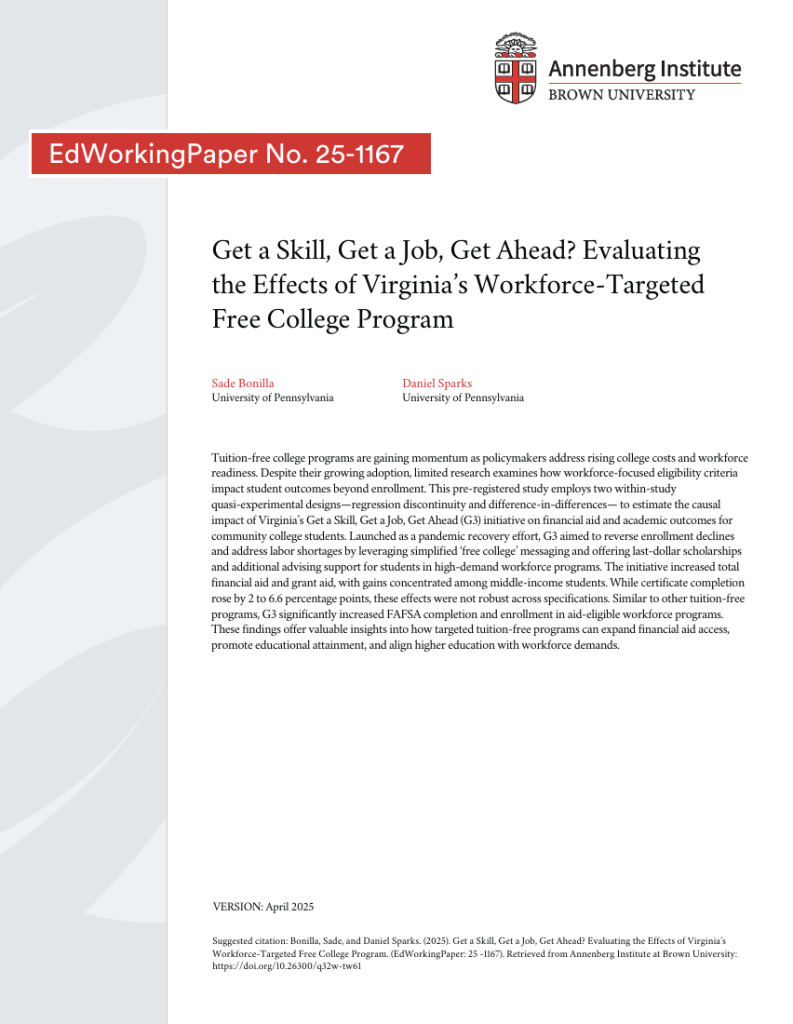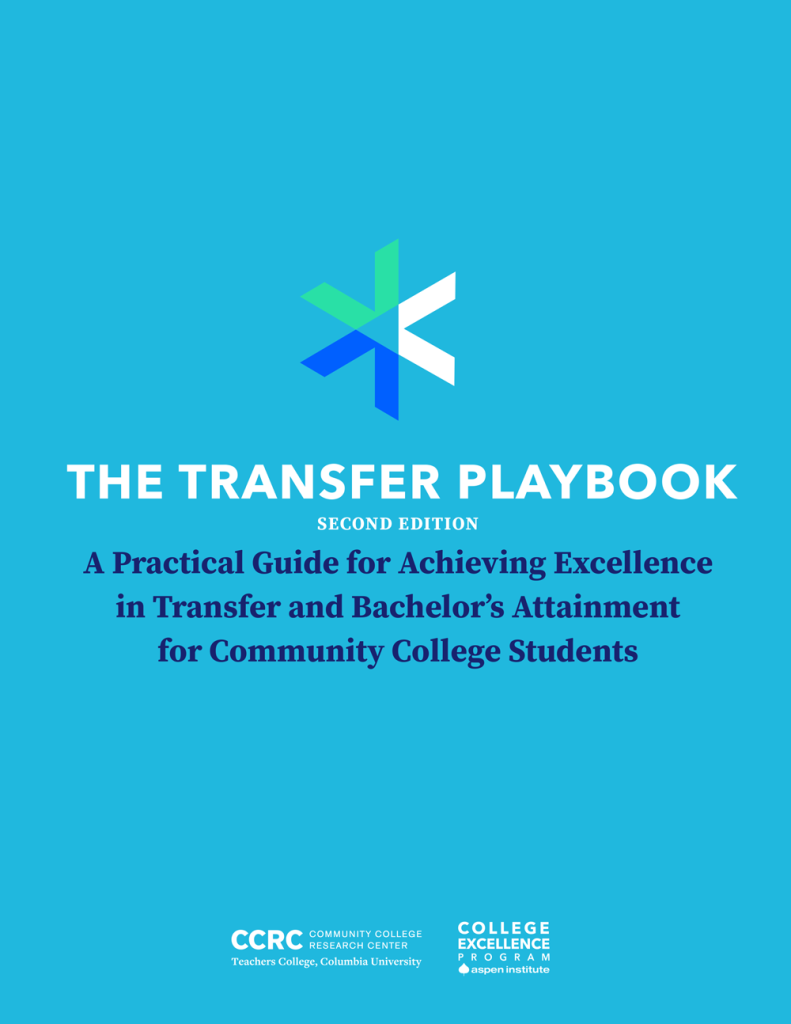Get a Skill, Get a Job, Get Ahead? Evaluating the Effects of Virginia’s Workforce-Targeted Free College Program

Using two quasi-experimental methods, this paper estimates the causal impact of Virginia’s Get a Skill, Get a Job, Get Ahead initiative on financial aid and academic outcomes of community college students.
Which Community College Awards Are Likely to Prepare Students for Post-Completion Success?

This report uses IPEDS and College Scorecard data to classify the credentials awarded by community colleges in 2022-23 and to assess which credentials are and are not likely to enable students to secure a living-wage job or transfer efficiently in a major.
The Transfer Playbook (Second Edition): A Practical Guide for Achieving Excellence in Transfer and Bachelor’s Attainment for Community College Students

The second edition of the Transfer Playbook provides guidance for achieving excellence in transfer and bachelor’s attainment for community college students based on practices observed at exemplary community college and university partnerships.
The Net Benefits of Raising Bachelor’s Degree Completion Through CUNY’s ACE Program

This Center on Poverty and Social Policy working paper estimates the incremental long-run benefits and costs of participation in CUNY’s Accelerate, Complete, and Engage program, aimed at increasing bachelor’s completion rates.
Lessons on Scaling Corequisites: The City University of New York’s Transition From Prerequisite to Corequisite Academic Support

This CAPR report draws on interview data with faculty and staff to examine how seven City University of New York colleges transitioned to fully scaled corequisite courses in English and math and the implications of their choices for early implementation.
